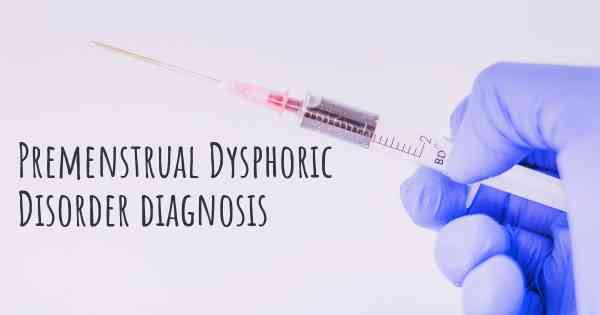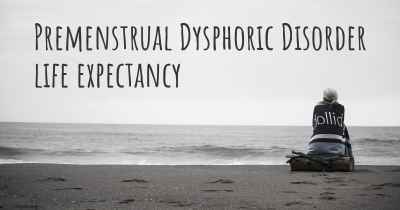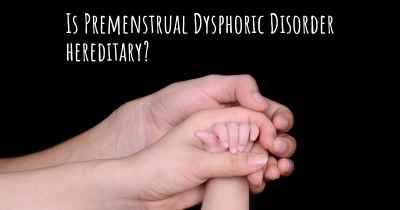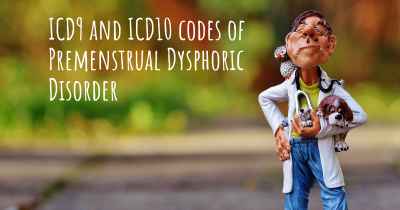How is Premenstrual Dysphoric Disorder diagnosed?
See how Premenstrual Dysphoric Disorder is diagnosed. Which specialists are essential to meet, what tests are needed and other useful information for the diagnosis of Premenstrual Dysphoric Disorder

Diagnosing Premenstrual Dysphoric Disorder (PMDD)
Premenstrual Dysphoric Disorder (PMDD) is a severe form of premenstrual syndrome (PMS) that affects a small percentage of menstruating individuals. It is characterized by intense physical and emotional symptoms that occur in the week or two before menstruation and significantly impact daily functioning and quality of life. Diagnosing PMDD involves a comprehensive evaluation to rule out other potential causes and to identify specific symptoms that align with the diagnostic criteria.
Medical History and Symptom Tracking
Diagnosing PMDD typically begins with a detailed medical history and symptom tracking. The healthcare provider will ask about the individual's menstrual cycle, including the regularity, duration, and timing of symptoms. They may also inquire about the severity and impact of symptoms on daily life, relationships, and work. Keeping a symptom diary for at least two menstrual cycles can provide valuable information for accurate diagnosis.
Diagnostic Criteria
The diagnosis of PMDD is based on specific criteria outlined in the Diagnostic and Statistical Manual of Mental Disorders (DSM-5), which is widely used by healthcare professionals. According to the DSM-5, the following criteria must be met for a diagnosis of PMDD:
- Timing: Symptoms occur in the week or two before menstruation and improve within a few days after the onset of menstruation.
- Severity: Symptoms significantly interfere with daily life, relationships, or work.
- Specific Symptoms: At least five of the following symptoms must be present, including one of the first four listed:
- Mood swings, irritability, or increased interpersonal conflicts
- Depressed mood, feelings of hopelessness, or self-deprecating thoughts
- Anxiety, tension, or feeling on edge
- Marked anger or increased interpersonal conflicts
- Decreased interest in usual activities
- Difficulty concentrating
- Lethargy, fatigue, or lack of energy
- Changes in appetite, overeating, or food cravings
- Insomnia or hypersomnia (excessive sleepiness)
- Feeling overwhelmed or out of control
- Physical symptoms such as breast tenderness or swelling, joint or muscle pain, bloating, or weight gain
- Exclusion: Symptoms are not attributable to the effects of a substance or another medical condition.
Physical Examination and Laboratory Tests
A physical examination may be conducted to rule out any underlying medical conditions that could be contributing to the symptoms. Laboratory tests, such as blood tests, may also be performed to assess hormone levels and rule out other hormonal disorders.
Psychological Evaluation
A psychological evaluation may be recommended to assess the individual's mental health and to rule out other psychiatric conditions that may mimic or coexist with PMDD. This evaluation may involve a structured interview, self-report questionnaires, and discussions about the individual's emotional well-being and coping strategies.
Collaborative Approach
Diagnosing PMDD often requires a collaborative approach involving healthcare providers from different specialties, such as gynecology, psychiatry, and psychology. This interdisciplinary approach ensures a comprehensive evaluation and accurate diagnosis.
Longitudinal Assessment
Since PMDD symptoms are cyclical and occur in relation to the menstrual cycle, a longitudinal assessment is crucial for an accurate diagnosis. Tracking symptoms over multiple menstrual cycles helps identify patterns and confirms the presence of PMDD.
Conclusion
Diagnosing PMDD involves a thorough evaluation of medical history, symptom tracking, adherence to diagnostic criteria, physical examination, laboratory tests, psychological evaluation, and a collaborative approach. It is essential to consult with a healthcare professional experienced in PMDD diagnosis and management to ensure an accurate diagnosis and appropriate treatment plan.
Posted Mar 2, 2017 by Kristina 1145
Posted Apr 11, 2017 by Rachel 850
Working with a specialist gynaecologist is also necessary due to the lack of knowledge of most GP's.
Posted Apr 12, 2017 by Maribel 1000
Posted May 16, 2017 by Kristie 1125
Posted Jul 24, 2017 by Limerencia 2070
Posted Aug 3, 2017 by Lynda Pickett 700
Posted Sep 10, 2017 by son678 2000
Posted Oct 22, 2017 by Deanna 2550
No physical exam or lab tests can diagnose PMDD. A complete history, physical exam (including a pelvic exam), thyroid testing, and psychiatric evaluation should be done to rule out other conditions.
Keeping a calendar or diary of symptoms can help women identify the most troublesome symptoms and the times when they are likely to occur. This information may help your health care provider diagnose PMDD and determine the best treatment.
Posted Aug 9, 2018 by April 3000








